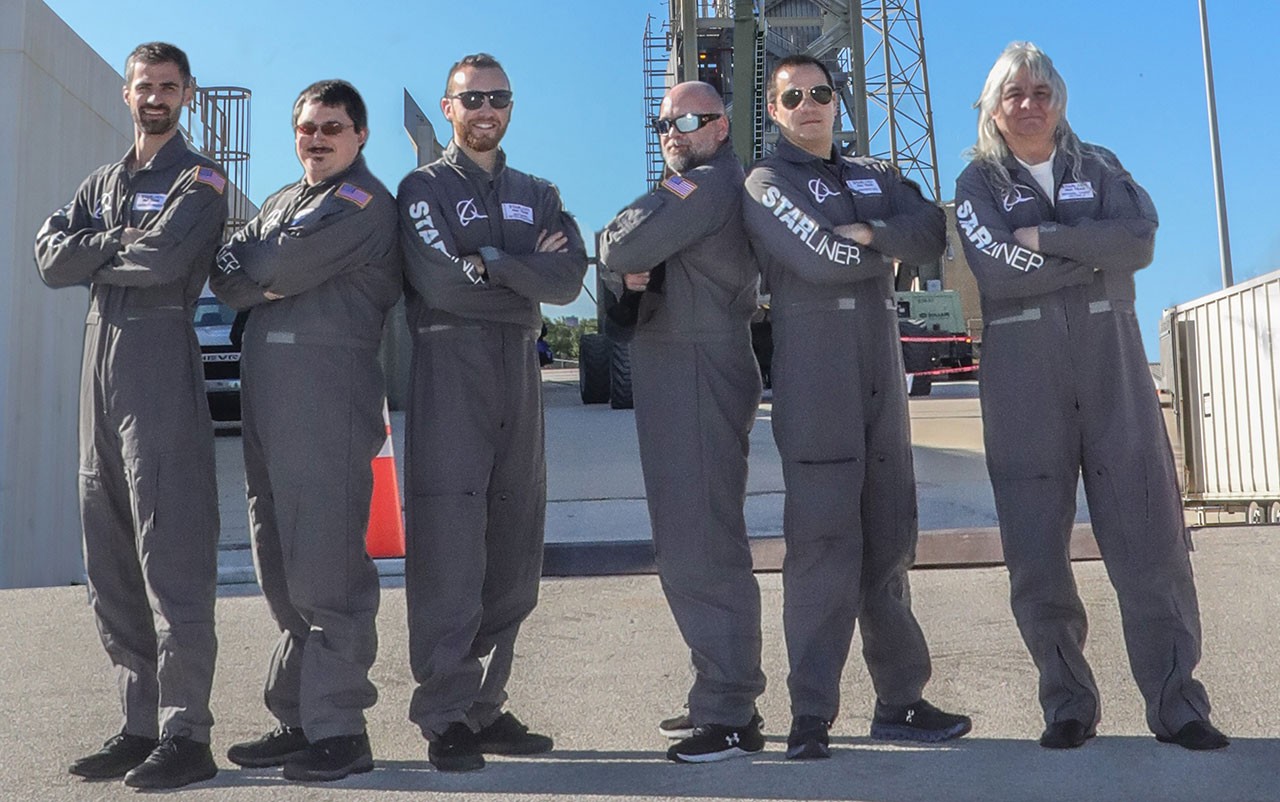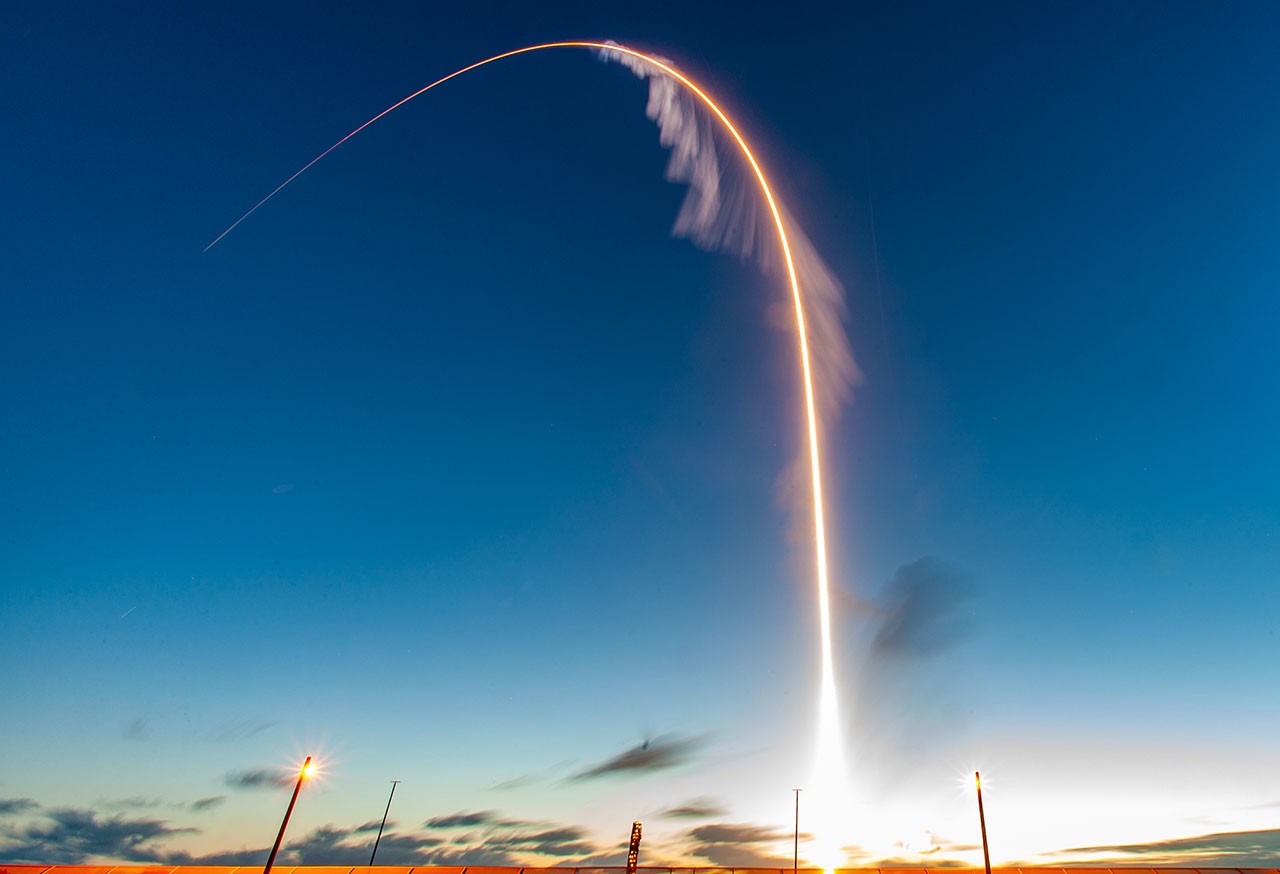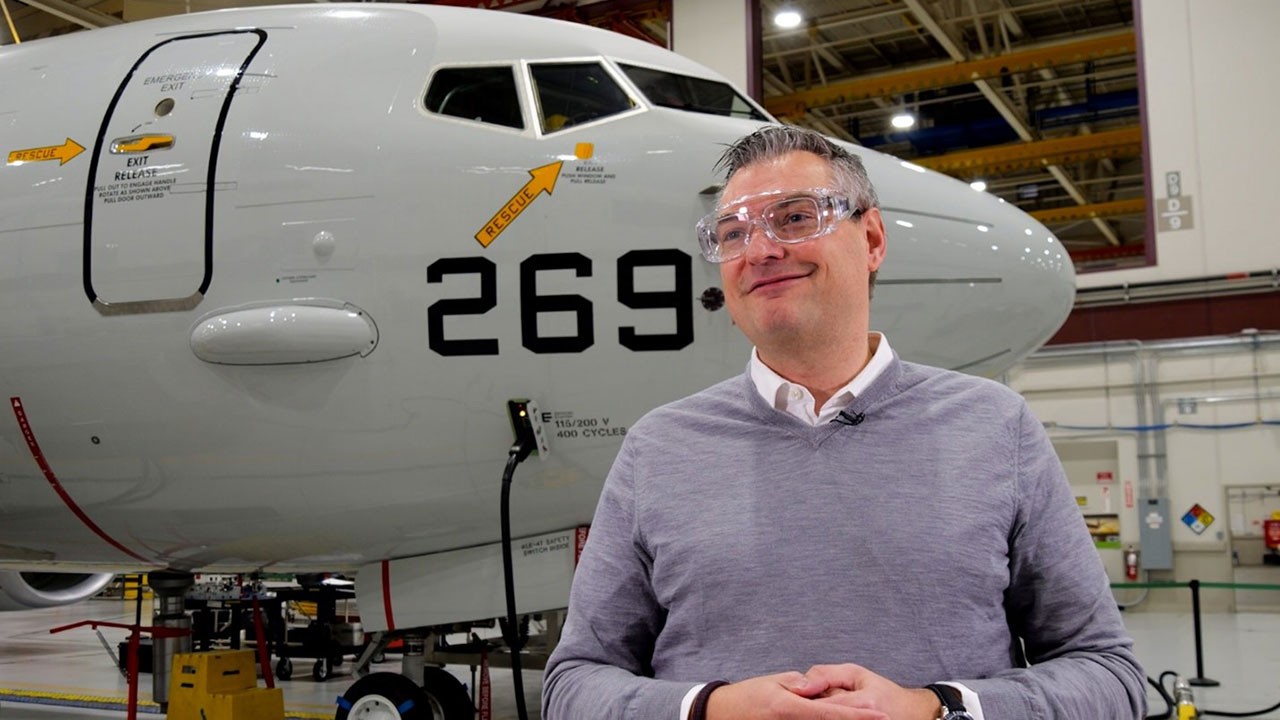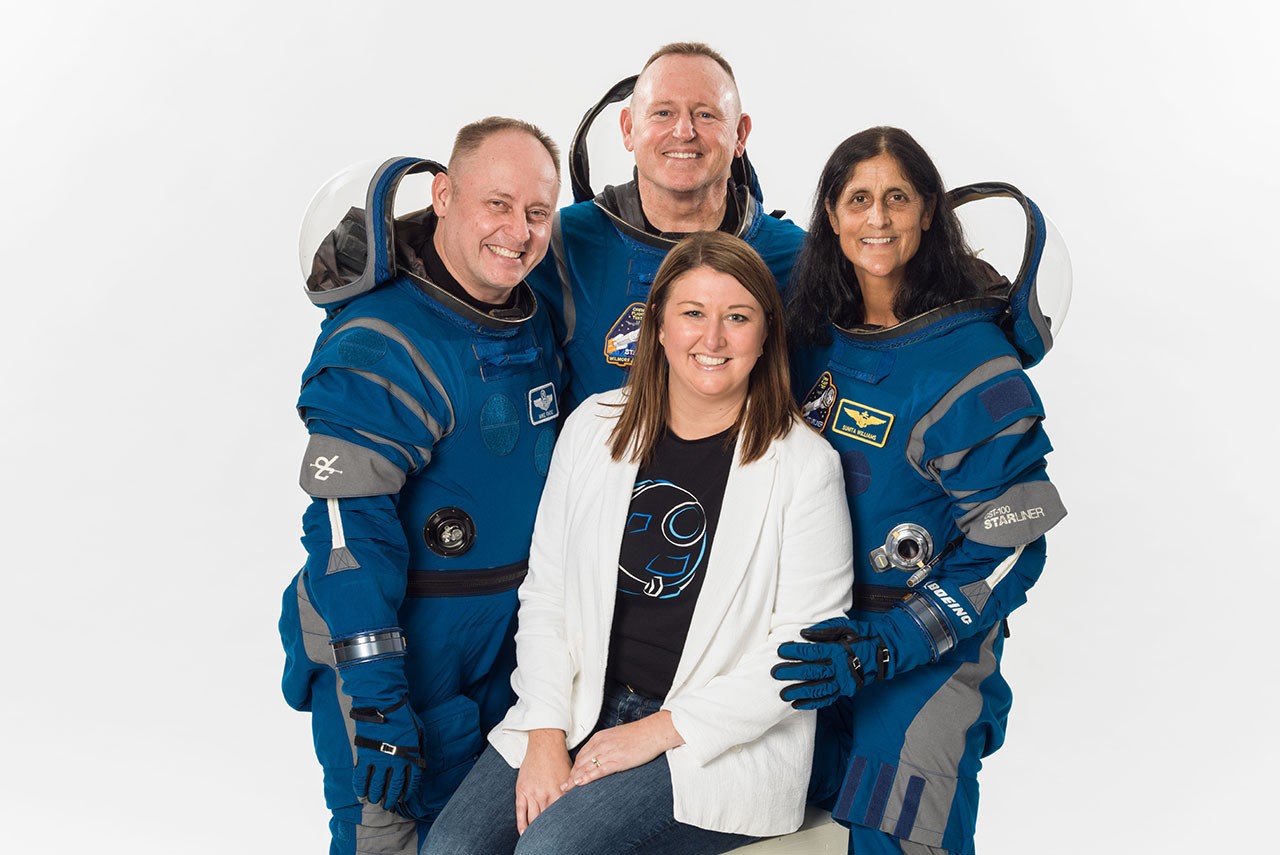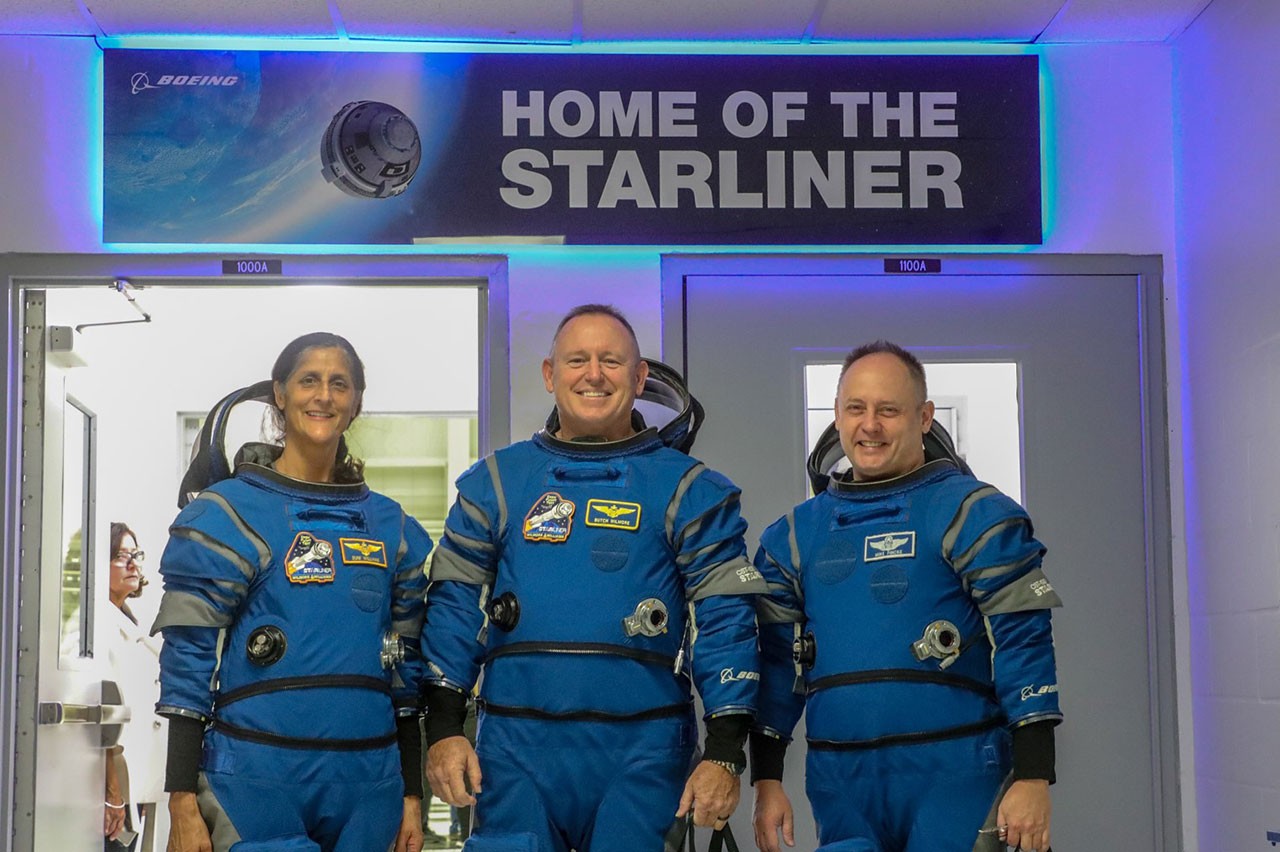5 ways the Boeing Starliner wows
Learn what it takes to build a fully autonomous spacecraft with manual-control options.
When the Boeing CST-100 Starliner departs on its upcoming Crew Flight Test, the spacecraft will have astronauts aboard for the first time. While the spacecraft is fully autonomous, should the astronauts need to take manual control — they can.
Discover below how Starliner operates either autonomously or through manual control — and how engineers and astronauts have prepared for both. Here are five things to know about the spacecraft and the technical work leading up to the first crewed flight.
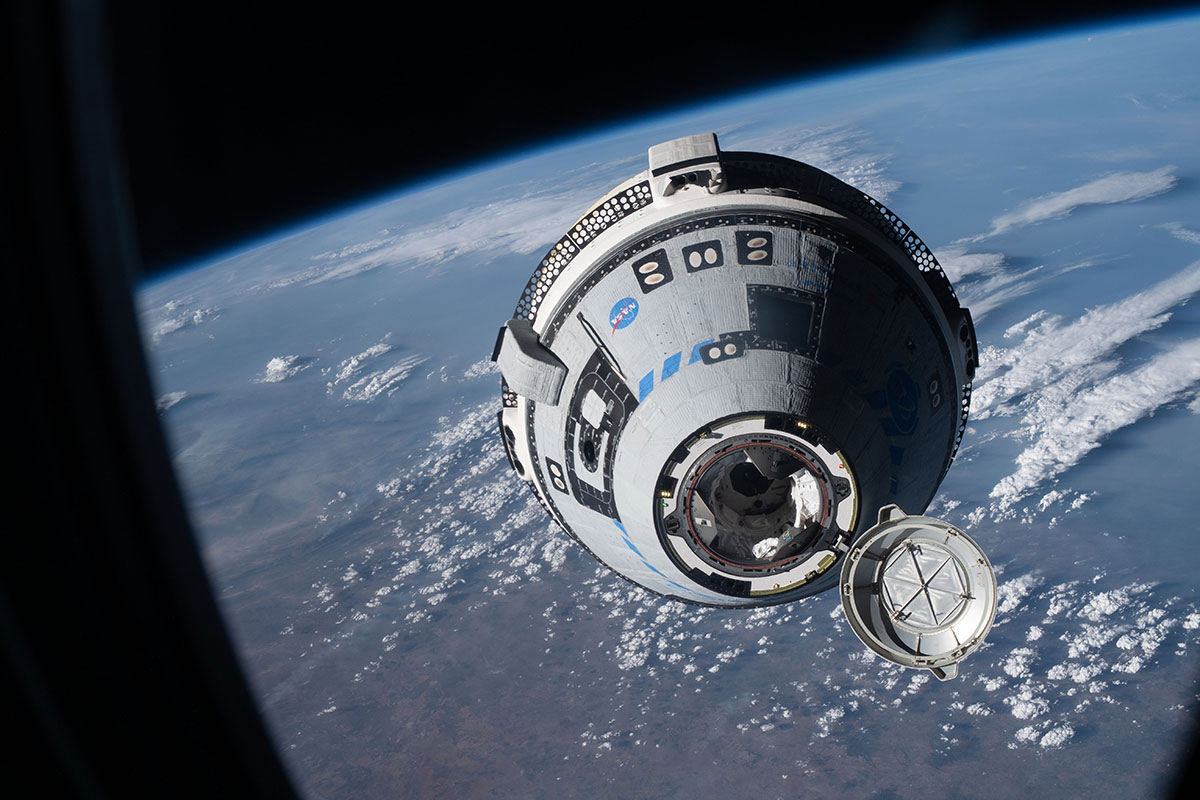 The CST-100 Starliner autonomously approaches the International Space Station during the uncrewed Orbital Flight Test-2 in May 2022. (NASA photo)
The CST-100 Starliner autonomously approaches the International Space Station during the uncrewed Orbital Flight Test-2 in May 2022. (NASA photo)
No. 1: The spacecraft can fly and course-correct on its own.
The Starliner operates, in some ways, like self-driving cars aspire. The spacecraft’s features resemble more sophisticated versions of cruise control and hands-free driving — meaning astronauts don’t have to do anything, if they like. They can simply enjoy the ride.
“The spacecraft does all the navigating,” said Aaron Kraftcheck, senior manager for Starliner’s Flight Software Design and Development. “It can even ‘repair’ itself.”
That’s because engineers designed the spacecraft with the ability to detect, isolate and respond to faults. They also built redundancy into the systems.
“Take, for example, the propulsion system,” said Evan Platt, chief hardware architect for Starliner’s Hardware and Software Integration. “There are 64 jets positioned across the vehicle in a strategic pattern. If one of those jets misfires, other jets can take over and get the spacecraft where it needs to go.”
No. 2: Astronauts and ground crews choose their level of control.
Just because the Starliner can fly to and from the International Space Station without human intervention does not mean humans can’t take charge.
During flight, astronauts gain situational awareness by communicating with ground crews and monitoring the spacecraft’s interior console. They can switch from automated to manual control any time they like. If, for instance, there’s a piece of space debris, astronauts can let the spacecraft autonomously navigate out of harm’s way, or they can do the piloting themselves.
Meanwhile, Boeing teammates who designed and integrated the Starliner’s hardware and software play important roles in each flight. Part of the team continuously staffs NASA’s Mission Control Center in Houston and the Boeing Mission Control Center at Kennedy Space Center in Florida. They work alongside experienced NASA flight controllers, helping monitor the flight and providing information. Other hardware and software integration teammates will be at a Boeing lab, available at a moment’s notice to troubleshoot, using labs and simulators to test solutions.
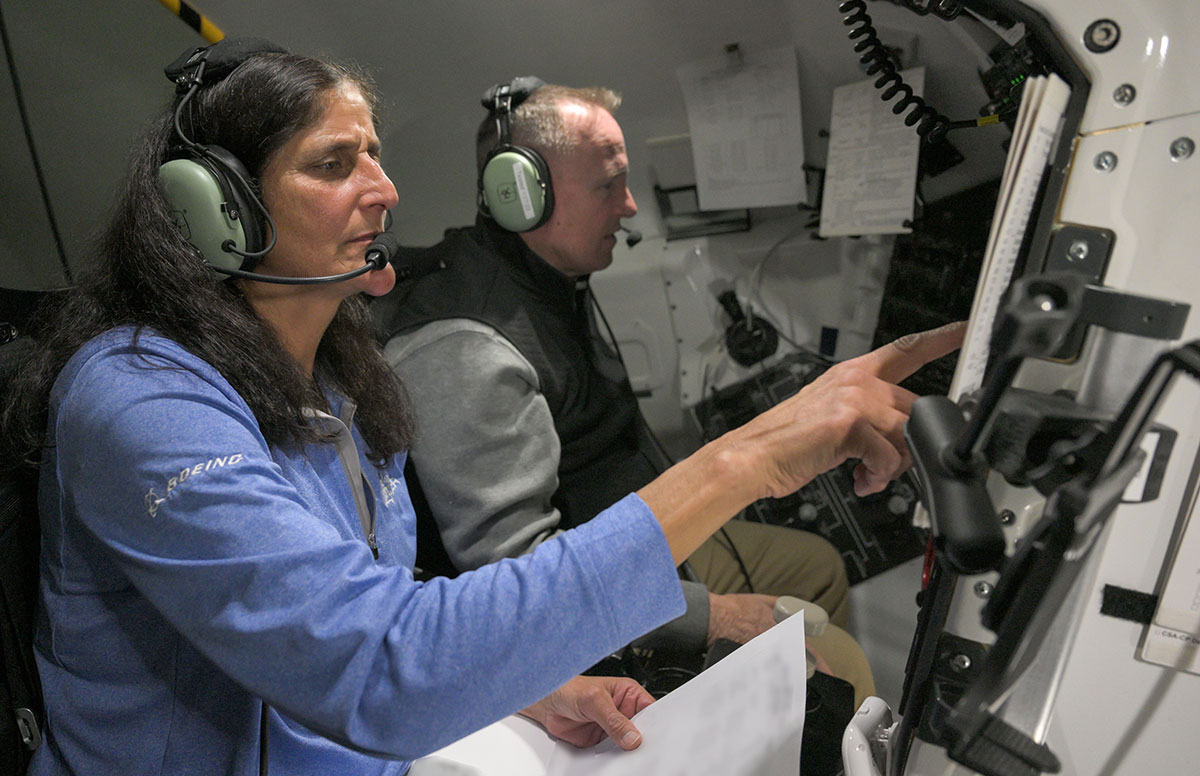 NASA astronauts Suni Williams (foreground) and Butch Wilmore during an Undock to Landing Mission Dress Rehearsal on Jan. 18 in the Boeing Mission Simulator in Houston. (NASA photo)
NASA astronauts Suni Williams (foreground) and Butch Wilmore during an Undock to Landing Mission Dress Rehearsal on Jan. 18 in the Boeing Mission Simulator in Houston. (NASA photo)
No. 3: Starliner is software driven.
“To do the cool stuff that Starliner does, there is lots of complexity in the system and in each component,” Kraftcheck said. “The most challenging and rewarding part is figuring out how to make it all work together.”
“Like an orchestra, the Starliner has many instruments playing different, complicated parts,” Kraftcheck continued. “But it’s the timing and interaction between each instrument that is especially critical. That’s the level of precision we’re building into our product.”
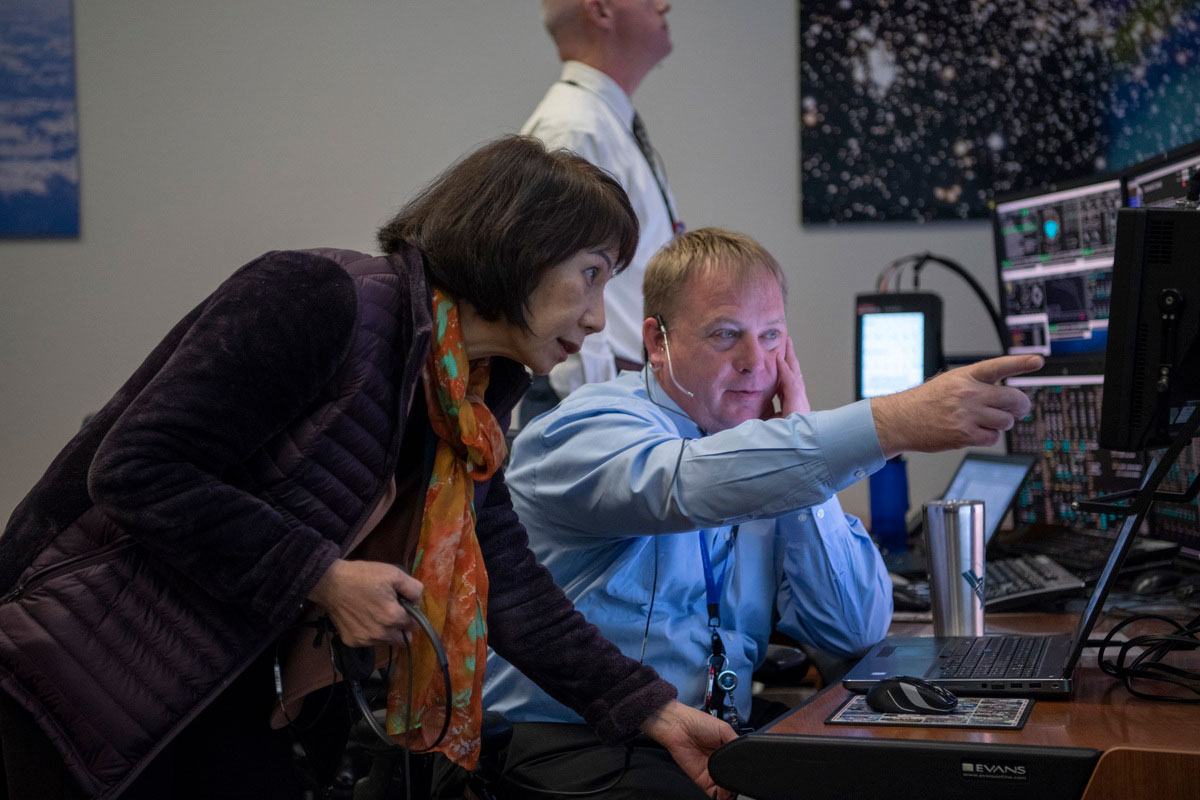 Stephanie Lu (foreground) and Aaron Kraftcheck monitor the launch of Starliner for the Orbital Flight Test in December 2019 in the Blue Flight Control Room at the Mission Control Center in Houston. (NASA photo)
Stephanie Lu (foreground) and Aaron Kraftcheck monitor the launch of Starliner for the Orbital Flight Test in December 2019 in the Blue Flight Control Room at the Mission Control Center in Houston. (NASA photo)
No. 4: Astronauts “fly” hundreds of missions before they leave Earth.
To prepare for the Crew Flight Test, the software and hardware teams have supported hundreds of simulated missions, working closely with the astronauts and mission control teams.
“We have done lots of testing, even above and beyond our original plan, to make sure everyone is prepared,” said Stephanie Lu, senior manager for Starliner’s Avionics and Software Integration and Test. “If the astronauts ask for another test, we are going to do it, because we want them to feel comfortable with the software and the product.”
In addition to rehearsing, the teams continue to test the systems and modify, as necessary.
“Software development and integration is like home improvement — it’s never done,” said Terri Puckett, director of the hardware and software integrated product team. “It requires vigilance, because there’s ongoing fine-tuning and testing. We love this work, because nothing means more to us than a safe and successful flight.”
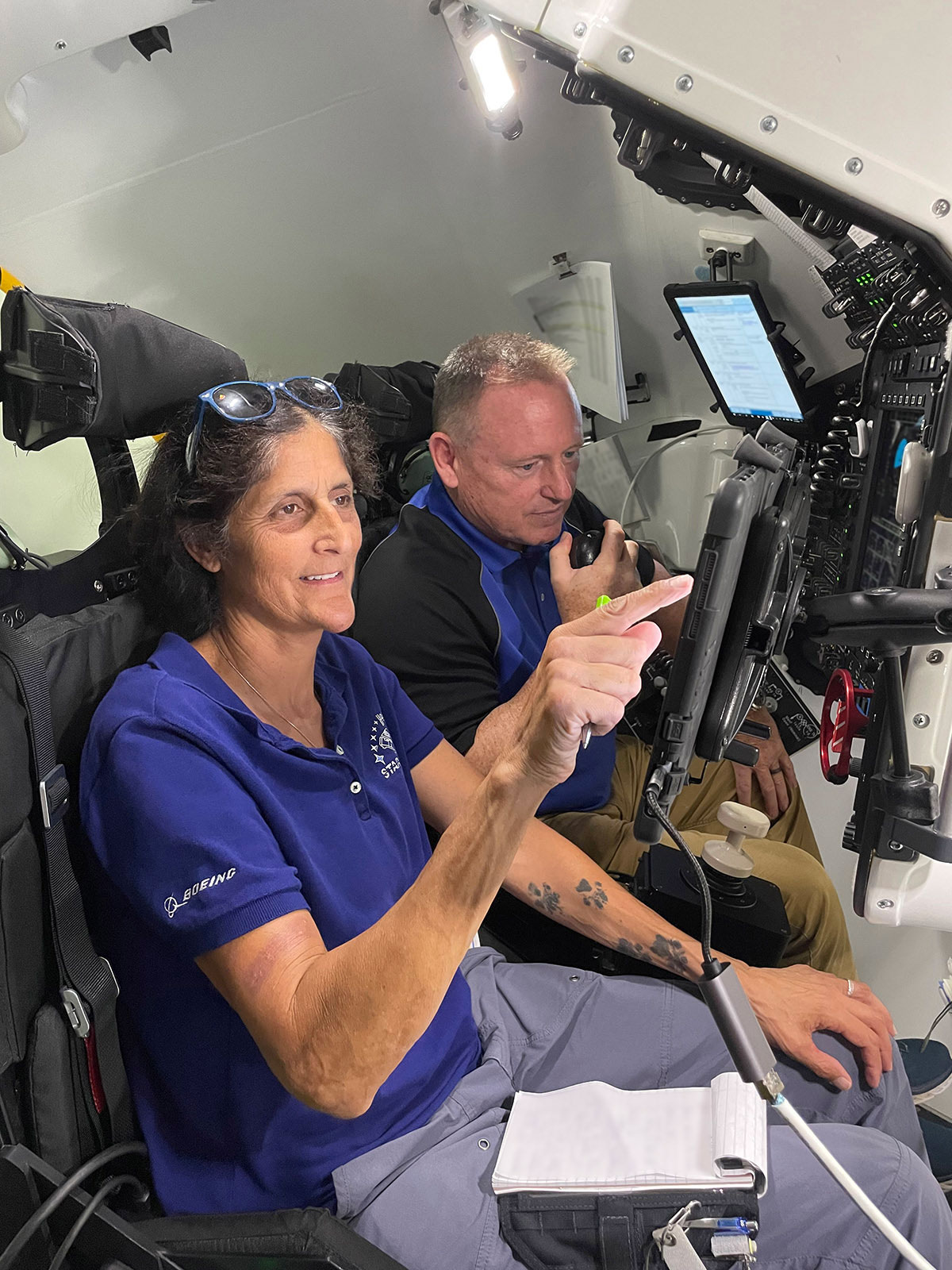 NASA astronauts Suni Williams and Butch Wilmore in the Boeing Mission Simulator in Houston. (NASA photo)
NASA astronauts Suni Williams and Butch Wilmore in the Boeing Mission Simulator in Houston. (NASA photo)
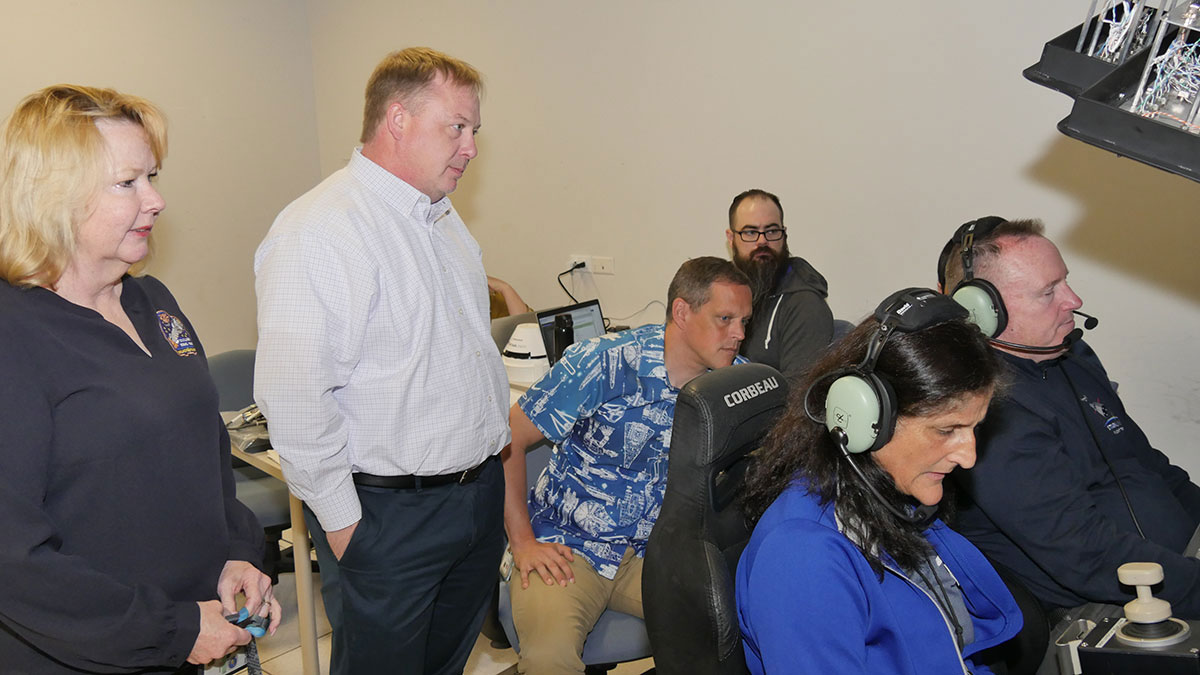 Boeing’s Terri Puckett (from left) and Aaron Kraftcheck, along with NASA astronaut Bob Hines and NASA’s Eric Prehn, observe NASA astronauts Suni Williams and Butch Wilmore in Boeing’s Avionics and Software Integration Lab in Houston in April 2023. (Boeing
Boeing’s Terri Puckett (from left) and Aaron Kraftcheck, along with NASA astronaut Bob Hines and NASA’s Eric Prehn, observe NASA astronauts Suni Williams and Butch Wilmore in Boeing’s Avionics and Software Integration Lab in Houston in April 2023. (Boeing
No. 5. Behind the technology, there’s dedication.
The Starliner software development and integration team’s journey reflects the dedication of its people.
“No matter what is going on around us, no matter how difficult the situation, the people on this team just keep their heads down doing the things that, in the moment, can feel impossible,” Kraftcheck said. “The whole company has rallied around us. I get emotional talking about it.”
The work, teammates said, is personal — and a dream come true. Many of them never pictured themselves working on a spacecraft, let alone talking to astronauts on a daily basis. They think of the Starliner’s first crew, Butch Wilmore and Suni Williams, as family.
“We know them, and we feel that,” Platt said. “They are why we are here. They are top of mind with every decision we make.”
The team, Puckett explained, digs into each challenge with resolve.
“Never in my career have I seen more resiliency,” Puckett said. “This team is determined to do great things together, no matter what comes their way.”
“Everywhere you look, there’s Starliner gear,” she added. “People are proud. And they should be.”
For more Starliner highlights, follow @BoeingSpace on X, formerly known as Twitter, starlinerupdates.com and the CFT mission website.
By Elaine Brabant
